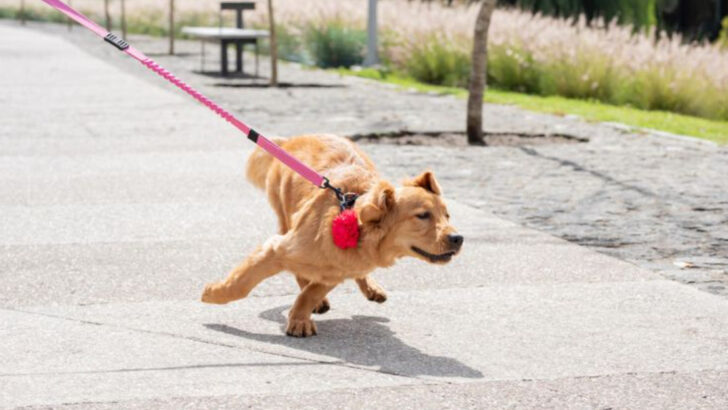If your daily walk feels more like a tug-of-war than a peaceful stroll, something’s off—and it’s not just your dog.
Leash training can look easy from the outside… until your arm’s sore, your dog’s zig-zagging like a maniac, and you’re wondering who’s really walking who.
The truth? Most leash problems come from simple mistakes—things we all do without even realizing it. But the good news? They’re super easy to fix once you spot them.
Let’s break down 6 common leash-training slip-ups and show you exactly how to turn chaos into calm—one walk at a time.
Mistake: Pulling on the Leash
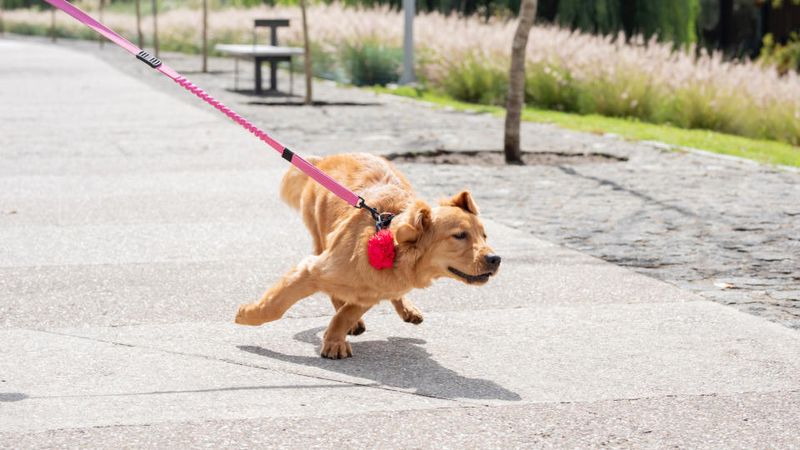
Yanking on a leash might seem like an immediate solution to control your dog, but it often triggers more resistance. Dogs naturally pull against tension, leading to a frustrating tug-of-war.
Imagine how confusing it must be for them when they’re just trying to explore their world. Instead, consider the effect of gentle guidance. Your leash should communicate comfort and security, not conflict.
Next time you’re out together, focus on guiding them with consistent cues and positive reinforcement, building a trusting bond. Patience can transform your walks into harmonious adventures, where exploration becomes a shared joy.
Fix: Use a No-Pull Harness
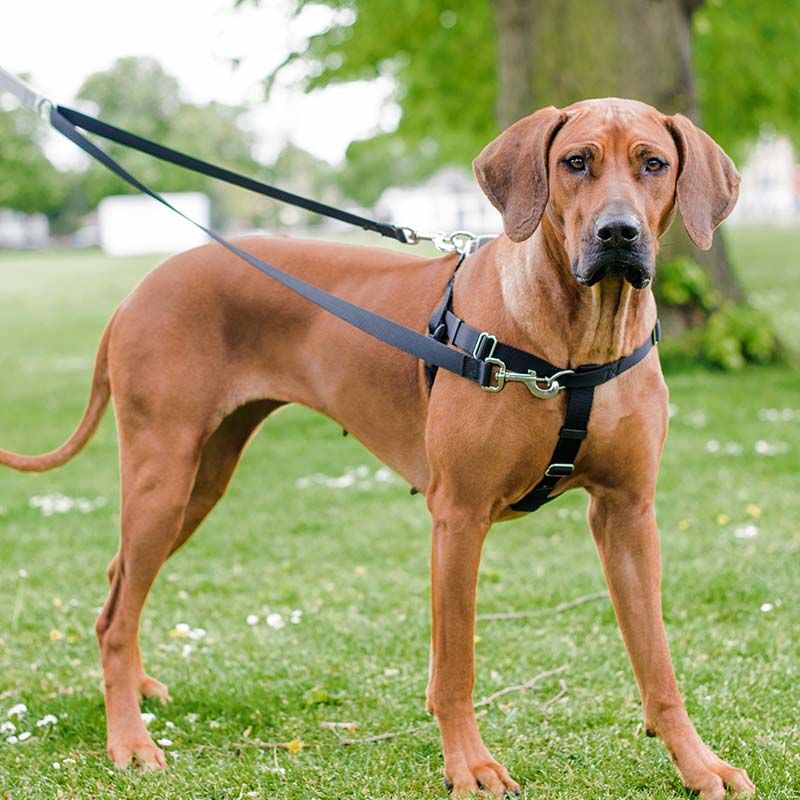
A no-pull harness can be a game-changer for those challenging walks. Unlike a regular collar, it distributes pressure evenly across your dog’s chest, minimizing discomfort and discouraging pulling.
This practical solution not only enhances your control but also ensures a more pleasant experience for both of you. Embrace the opportunity to guide them with gentle nudges rather than forceful tugs.
Harnesses often come with additional features, like padded straps, that add to your dog’s comfort. Consider this small change, and watch as your walks transform into leisurely strolls without the constant pull.
Mistake: Inconsistent Commands

Using varied commands can bewilder your dog, leaving them unsure of what you expect. Consistency is key in leash training, as dogs thrive on routine and clear guidance.
Reflect on the confusion caused by mixed signals, where one moment it’s ‘heel’ and the next it’s ‘walk on’. Instead, choose a simple, consistent command to guide your dog.
Establishing a clear vocabulary ensures your furry friend understands your expectations, strengthening your communication. This consistency fosters confidence, making each walk a delightful dance of understanding rather than a confusing frenzy of mixed messages.
Fix: Establish a Command Routine

Creating a routine with specific commands builds your dog’s confidence. When your dog knows what to expect, they’re more likely to behave predictably.
Consider a simple sequence of commands that align with your walk’s flow. Start with ‘sit’ before leaving, ‘wait’ at intersections, and ‘heel’ when moving.
Reinforce these commands with praise and treats, turning training into a rewarding experience. A consistent routine not only enhances your dog’s obedience but also enriches your connection. Your dog will appreciate the clarity, turning every walk into a structured exploration of joy and discovery.
Mistake: Using a Retractable Leash
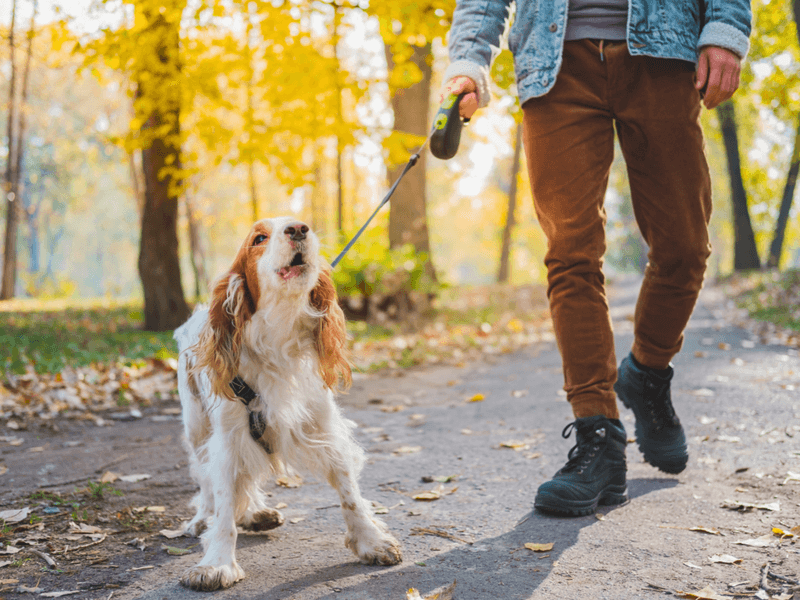
Retractable leashes may seem convenient, but they often create more problems than they solve. These leashes encourage pulling and give your dog too much freedom, leading to unexpected situations.
Picture the chaos of trying to reel in your dog when they dart off toward a squirrel or a busy road. Instead, opt for a standard leash that offers you more control.
A fixed-length leash provides a consistent boundary, helping your dog understand their limits. With this approach, walks become safer and more predictable, minimizing potential hazards and enhancing your peace of mind.
Fix: Opt for a Standard Leash
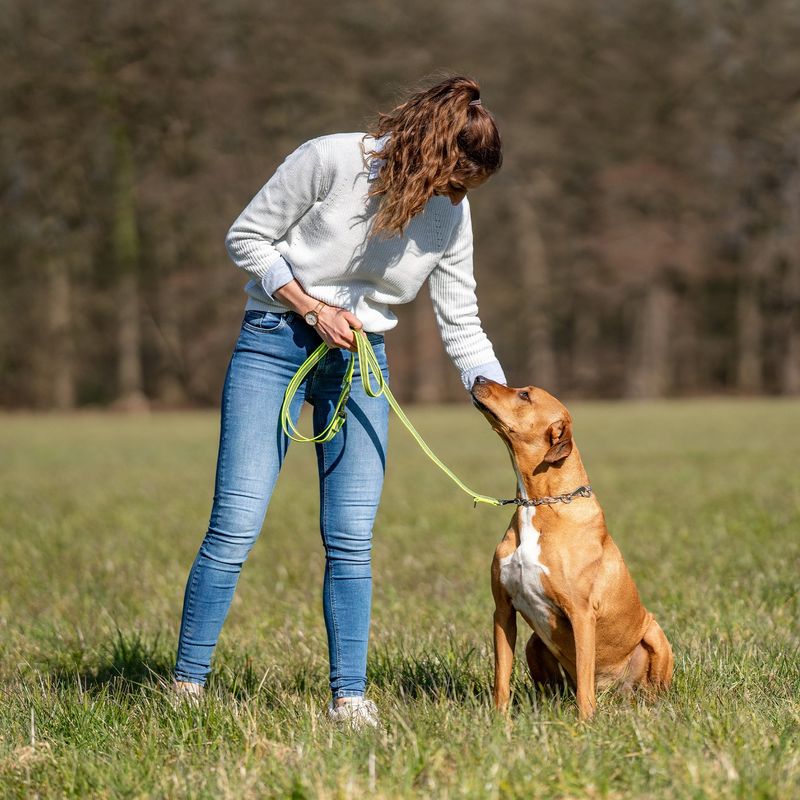
Choosing a standard leash can make a world of difference in your leash training journey. Unlike retractable ones, a fixed-length leash offers better control and safety.
Imagine the ease and comfort of a walk where your dog stays close, reducing hazards and improving communication. This leash allows you to guide them with confidence, reinforcing boundaries without harshness.
Embrace the simplicity of a standard leash and enjoy the predictability it brings. Your walks will become smoother, and your connection with your dog will grow, as you lead with assurance and care.
Mistake: Overlooking Distractions

Ignoring potential distractions can derail an otherwise peaceful walk. Dogs are naturally curious, and new sights, sounds, or scents can easily capture their attention.
Think about the challenges when your furry friend spots a fellow canine or a tempting snack on the ground. Your reaction can set the tone for their behavior.
Stay alert and anticipate these distractions, using them as opportunities to reinforce training. Acknowledging their presence and responding with calm redirection turns potential chaos into training moments, deepening your bond and ensuring a more focused and enjoyable walk.
Fix: Practice Focus Training
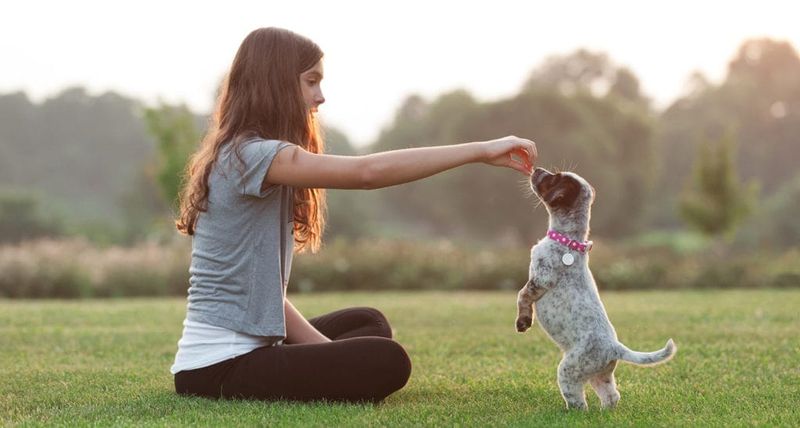
Focus training sharpens your dog’s attention, turning distractions into learning opportunities. Encouraging eye contact and rewarding attentive behavior builds their concentration.
Consider simple exercises like ‘watch me’ or rewarding them when they ignore distractions. These activities make learning engaging and enjoyable for your dog.
With consistent practice, your dog will learn to tune into you despite external stimuli. This makes your walks peaceful and rewarding, as they learn to trust your guidance. Focus training not only enhances obedience but also strengthens your connection, as you explore the world with mutual understanding.
Mistake: Walking at the Wrong Time
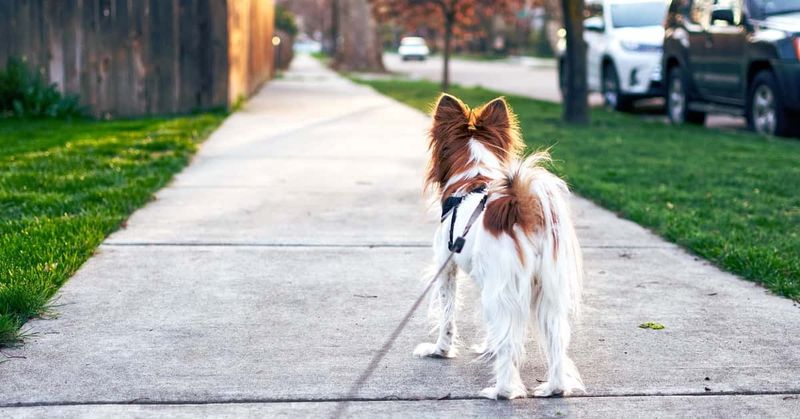
Timing your walks incorrectly can affect your dog’s mood and health. Going out during the hottest part of the day can lead to overheating and crankiness.
Imagine your pet’s discomfort as they struggle in extreme temperatures. Plan walks during cooler parts of the day like early mornings or late evenings.
This not only protects them from heat but also makes the experience more pleasant for both of you. Adjusting your schedule can enhance the benefits of each walk, ensuring your dog remains energetic and happy, ready to explore their surroundings with enthusiasm.
Fix: Schedule Walks Wisely

Scheduling walks during cooler times is crucial for your dog’s comfort and health. Early mornings or late evenings provide a serene environment away from harsh sunlight.
Picture the tranquility of a walk under the gentle rays of dawn or the calming hues of dusk. This timing avoids the heat, minimizing the risk of overheating.
Not only does this protect your dog’s well-being, but it also enhances the experience for both of you. Planning wisely ensures your walks are enjoyable and invigorating, creating a routine that your dog will eagerly anticipate every day.
Mistake: Neglecting to Reward Good Behavior
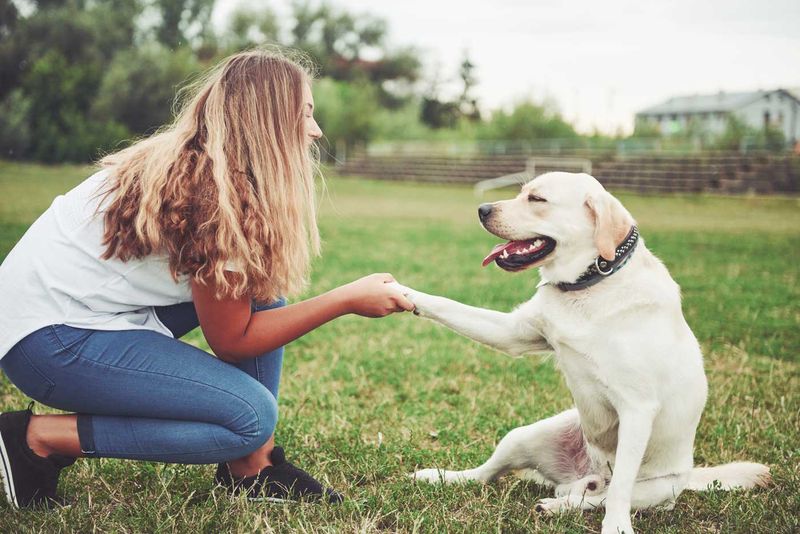
Forgetting to reward your dog’s good behavior can hinder progress. Positive reinforcement is a powerful tool in leash training, as it encourages desired actions.
Imagine how your dog feels when their efforts go unnoticed. Carrying treats or offering praise reinforces good behavior, motivating them to continue.
Create a routine where rewards are an integral part of your training. This not only helps your dog understand expectations but also strengthens your bond. Celebrate successes, big or small, transforming walks into joyful experiences filled with love and appreciation.
Fix: Use Positive Reinforcement
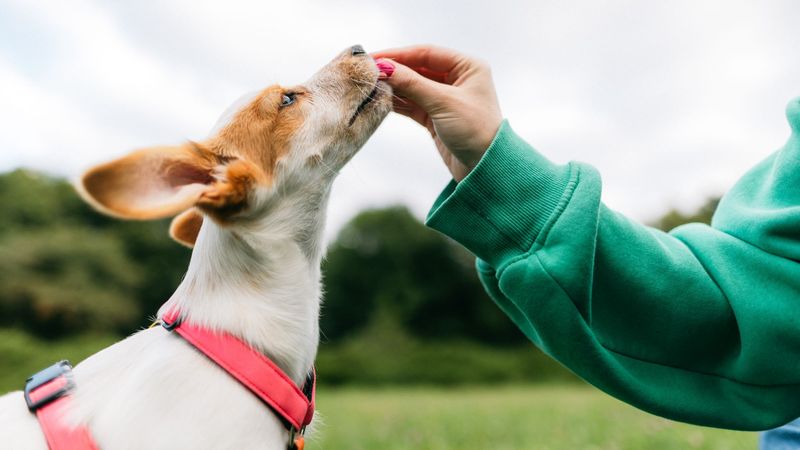
Positive reinforcement is key to successful leash training. Rewarding your dog with treats or praise encourages them to repeat good behavior.
Consider how a simple treat or a kind word makes their tail wag with happiness. This approach builds trust and understanding, fostering a harmonious relationship.
Make rewards a consistent part of your training, celebrating achievements along the way. By reinforcing positive actions, you create a supportive environment where your dog feels valued and motivated. The joy of shared success strengthens your bond, making every walk a delightful adventure together.

